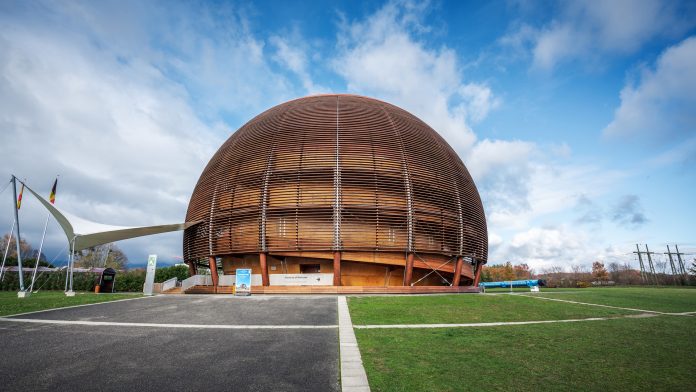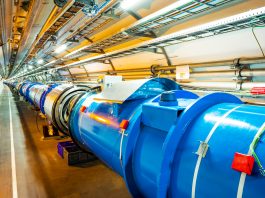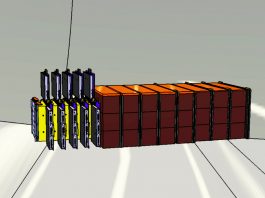Researchers with CERN’s ATLAS collaboration at the Large Hadron Collider have achieved the first observation of electroweak top-quark–photon production.
The top quark is incredibly unique; it is the heaviest known particle and thus interacts with the Higgs boson. The top quark’s interactions with other particles offer very encouraging information in the quest to discover physics beyond the Standard Model.
By attaining precise measurements of its properties by employing rare methods, researchers are able to investigate novel physics phenomena at the highest energies.
Observing top-quark-photon production
At the ongoing Rencontres de Moriond conference, the ATLAS collaboration at the Large Hadron Collider (LHC) revealed how they observed of one of these rare processes: the generation of one top quark that is associated with a single photon through the electroweak interaction.
With a statistical significance far greater than five standard deviations, the team’s outcomes symbolise the first observation of top-quark–photon production.
The researchers stressed that this phenomenal accomplishment was incredibly complicated, as the pursuit of this process necessitated the occurrence of a large number of background collision events that mimic top-quark–photon production.
Attaining the right background collision events
In their novel study, the ATLAS collaboration scientists examined the full LHC Run 2 data set, documented by the detector between the years 2015 and 2018. They concentrated their studies on collision events where the top quark decays through a W boson to an electron or a muon and a neutrino, and to a bottom quark.
The team then further reduced their quest by pursuing a specific characteristic of top-quark–photon events: a ‘forward jet’, which is a spray of particles that is commonly produced and moves at small angles to the LHC’s proton beams.
In order to distinguish the top-quark–photon events from the background events, the ATLAS scientists utilised a neural network that obtains a number of variables or features as input. As well as this it searches for the amalgamation of those characteristics that most precisely categorises a data event conferring to signal or background types.
Statistical significance
The statistical significance of the ATLAS measurement of top-quark–photon production is 9.1 standard deviations – which is comfortably higher than the 5 standard-deviation thresholds necessary to assert the observation of a process in the field of particle physics. The expected the significance, based on the Standard Model prediction, was 6.7 standard deviations.
This groundbreaking measurement will permit scientists to search for signs of novel interactions that may occur outside the reach of the LHC. In particular, researchers are now able to employ this process to extrapolate information on new particles that may modify the top-quark–photon interaction.
Additional studies with innovative analysis methods and a considerably greater data set from the upcoming Run 3 of the LHC have promising potential for an electrifying road ahead in particle physics.









